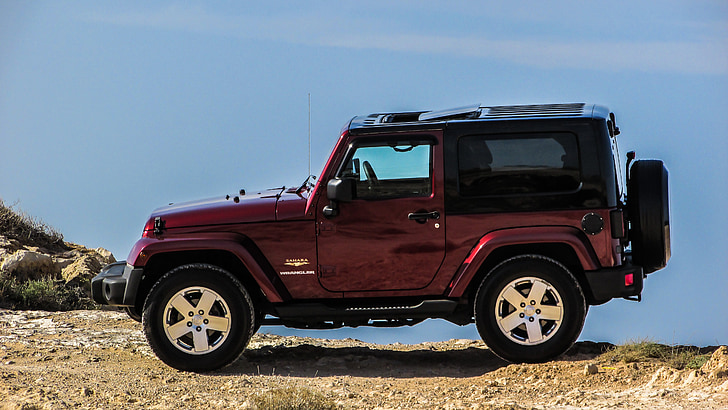In the old days, going off-road was all about a rugged build. That’s why you observe so many old SUVs being so harsh that the drivers who occasionally went on excursions often skipped workouts at their local gyms. Of course, that meant a lot of discomfort for all passengers, which is why modern Jeeps have moved on to more technological solutions.
Those include various adjustments and systems such as adaptive ride height and hydraulic suspensions. However, a locking differential is often a significant tool to help your Jeep to go over rough terrain. But can you feel confident about it in every Jeep, or do some civilised models leave it out? Here’s a piece that will detail how locking differentials work, what benefits they bring to the car, and which Jeep models in Australia have them.
How Locking Differentials Work
By default, a differential allows the inner and outer wheels to run at different speeds. That allows the car to maintain stability as it goes around the corner. A locking differential will enable you to restrict that freedom in specific conditions, such as when your Jeep gets stuck in the mud. Running both wheels along the axis increases traction, providing more grip in adverse conditions.
Locking differentials in Jeeps can be available in two forms:
- Single-Axle Locking Differential: Such a locking differential is only present across a single axle. Usually the rear axle since that is where all the power goes.
- Multi-Axle Locking Differential: Such locking differentials have multiple links to let you lock the front and rear differentials independently. A few variants even allow you to operate all wheels at the same speed, providing the traction to the Jeep that it needs to go up steep inclines.
Benefits Of Locking Differentials
Locking differentials have various benefits in Jeeps and other off-road SUVs.
- They prevent the car from being stuck in low traction conditions.
- They allow for increased safety for the axle. A locked differential is much harder to rupture by rocks than a regular differential.
- Locking differentials enable you to park your vehicle in steep conditions, like along the mountain or at the beachside.
- Locking differentials make the drivetrain of the car last longer. You can also use them in emergencies to transfer power and ease the load on a damaged driveshaft.
Jeep Models With Locking Differentials
All Jeep models that come with a 4x4 AWD system have locking differentials. A few notable examples are listed below.
Jeep Wrangler
The Jeep Wrangler Rubicon has a robust 4x4 AWD system that comes with a multi-axle locking differential as standard. It resists water and mud contamination and can last as long as the transmission remains intact. You can operate it digitally from a button within the cabin or leave the onboard system on an adaptive setting that activates it as soon as it detects low traction conditions.
The Night Eagle and Overland trims also contain locking differentials, but only for the rear axle. They don’t get the traction you obtain on the Rubicon, but they are still versatile enough to tackle most of the terrain across the Australian Outback.
Jeep Gladiator
The Jeep Gladiator is a pickup truck variant that can let you bring some extra cargo on your camping trip. The extra space in the back can even store the game that you shot on your journey. Thus, Jeep has been generous and allowed for locking differentials installed on all trims of the Gladiator. Much like the Wrangler, you can turn them on/off manually or use an adaptive setting to let the computer make the decision for you.
Both trims of the Gladiator feature multi-axle locking differentials. The 4x4 AWD allows for a tremendous traction gain when combined with other systems, such as ride height control and ABS. The system can even dislocate the transfer drive to make the load on the wheels more manageable.
Jeep Grand Cherokee
The Grand Cherokee maintains the perfect balance between the suburban SUV and a rugged vehicle that you can take into the wild on the weekends. Thus, except for the Cherokee L, you can get a rear-axle locking differential option on all the trims. It doesn’t have the effectiveness of the Gladiator and the Wrangler, but it still provides enough grip to take the car in rough terrain.
Given that the Cherokee is an SUV with a massive wheelbase and a ladder chassis, a locking differential adds much to the car’s stability and safety. The single-axle configuration also makes it more convenient to check and repair the differential at your nearest service centre.
Jeep Compass
For its entry-level model, Jeep doesn’t make the differential locking feature available on all trims. Yet, you can get it by default on the Trailhawk and as an option for all the other frames. The only variant is the rear-axle locking differential, but it’s still capable enough to encounter a few rough trails, fulfilling the namesake of the Trailhawk. The best part is that whether the driver has the locking differential added or not, it doesn’t affect the quality of the ride.
Installing Or Repairing Locking Differentials
If you purchased an old Jeep model that doesn’t have a locking differential, you need not panic. It only takes a few hours and can last as long as the transmission if you obtain the right Jeep spare parts. The feature is also available as an aftermarket part and can be installed even after the vehicle has been driven out of the showroom.
Of course, it depends upon which service you choose for installation or repairs. In light of that, Just Jeeps can be your ideal choice. We deal in factory and aftermarket jeep parts Australia for all modern Jeep models, even those that have been discontinued. You can leave your beloved vehicle in the hands of our trained technicians without a single cause for worry. A significant advantage you get is that we can provide you with fair deals, depending on your trim and model. We can install/repair locking differentials of any configuration and get your Jeep back to you in no time.

